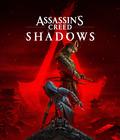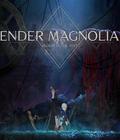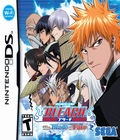Genre: Fighting
Publisher: SEGA
Developer: Treasure
Release Date: October 2, 2007
Anime-based games — actually, check that — licensed games of any sort are a shark-infested sea when it comes to quality. On occasion, you find a miraculous sunken treasure, like Chronicles of Riddick. More often than not, wading in simply results in you crawling back to shore with your metaphorical legs bitten off, as with … well, just about everything else. Combine this with the fact that other than the Jump Superstars games, the DS really doesn't have any standout fighting games, and, by all rights, Bleach: The Blade of Fate should be bait in those churning waters.
Imagine my surprise when it turns out to be a solid game and one of the best fighters the DS has seen.
The Blade of Fate is indeed a standard fighting game, by and large forcing your chosen character into a one-on-one battle with another chosen character. Special moves are of the common Street Fighter II style, full of circular movements on the d-pad followed by an attack button. Your aim is also the usual: keep your own health high while reducing your opponent's to zero, with the battle displayed on the top screen. Amazingly, the game manages to keep these conventions fresh with a few additions and some frankly wonderful ideas and interface tweaks, without breaking the tried-and-tested fighting game style.
Special moves, which can be a little fiddly on the DS' d-pad, are entered in the normal way, but you can also tap a button on the touch-screen to unleash a particular special or super move. The game has full support for up to four characters, so you'll occasionally find yourself facing off in two-against-one matches … but it's not particularly frustrating, thanks to some clever balance tweaks. For one thing, the battlefield is divided into front and back planes whenever there are more than two characters present, so you can hop back and forth quite swiftly if you need a second to recuperate or get out of the line of fire. Likewise, a solo character's health is scaled up accordingly; against two opponents, said character will have twice the health he or she normally would. Being attacked from two sides and comboed back and forth can still seem ridiculously unfair, but there's always a way out of it.
Things are further refreshed with the addition of Spirit Cards. At any given time in the match, you have two Spirit Cards available to you, chosen from a preassembled deck. These are essentially one-shot power-ups that cause various effects. One might make you invulnerable for about a second, making it perfect for a hurried counterattack against an overzealous opponent. Another may increase your attack power or base speed, while others will hinder your opponent, forcing them to constantly sprint when they're not attacking, or temporarily preventing them from using special moves. Spirit Cards aren't essential for victory, but a solid deck can be an amazing tool in the hands of a skilled player. If you don't want to spend hours tweaking your deck, you'll still do fine. It's a marvelous linking of the two concepts without letting the less-important card metagame become too significant.
The cards are acquired either from the in-game shop (currency is earned by successfully conquering one of the game's modes) or won through one of the many, many story modes. There's a standard arcade mode, too, as well as the normal practice and custom matches, but I'm getting off point: There are proper story modes in Blade of Fate. Lots of them. And all of them have well-written text. Given the genre, this title boasts an almost unheard-of dedication to the lone player.
The first story is large enough by itself, encompassing protagonist Ichigo's quest for a power called a Bankai, and it leads up to his battle with Byakuya Kuchiki, but there are over 20 others in addition to it. The extra story modes don't match up to the first one (which has around 15 battles in it, and even a spurt of non-linearity), but they add a bit of extra meat to the first story and expound upon the characters themselves. For a Bleach, fan the plot trappings are unnecessary, but for someone coming into the game blind, they provide more characterization than you're likely to find outside of the Guilty Gear series. Most only involve between three and five battles, but each focuses on a different character and provides a useful way to learn how to play as, and against, the different fighters.
I can't comment on non-linearity without going into a little more detail, so suffice it to say the game offers you various choices during the primary story mode. It transpires that to complete his quest, Ichigo needs to defeat each of the Soul Reaper captains (think the Grim Reaper, only more human), and depending on certain conditions, he'll take a different route from the "hub" fight each time. One path may be determined by whether or not you get at least one 20-plus hit combo, while another might depend on how much energy the player has remaining at the end of a given fight. Eventually, you have to go down every path, but it's never frustrating.
The Blade of Fate gives you hints to the requirements (and eventually tells you them outright, if you keep going down the same route) and helps out further if you continue mucking up. I was having huge difficulties with finding one captain and groaned when I realized I'd missed it and would have to beat several prerequisite fights once more … and then one of the other characters complained loudly that I was fighting him again and that he'd block off any paths that were no longer relevant. Beautiful.
Astonishingly, the game also manages to get one thing right that's even rarer in fighting games than a good story mode: It teaches you how to play. The first few matches in Story Mode introduce you gently to the controls, concepts and the status bars. A later tutorial goes so far as to teach you the concepts that are usually left to the experts, and how to pull them off, like Guard Cancels. In short, after going through the first story, anyone should be able to hold his or her own.
Multiplayer mode is also fair. The Blade of Fate has online play in addition to single-cart play through the data download system in the DS, and the latter seems fully featured, with the sole problem that you can make a hot drink in the time it takes to send all of the necessary data … during every single match. Considering the speed with which some matches are over, it's a problem, but it's unlikely to keep determined players from enjoying it.
So, no, it's not perfect. The fighting engine is perfectly capable and allows for a great degree of maneuverability in addition to cunning tricks, but some of the characters are a bit lacking, and there are the usual balance issues. Admittedly, these crop up in almost every fighting game, but it's a bit of a disappointment to see some blatantly overpowered characters, and others with infinite combos. Still, it's not entirely unexpected, and just about every character has some hope of beating any other character, if the player is skilled enough.
The AI can occasionally be incredibly brutal and on the higher settings, it seems to react before you've finished pressing buttons, and there are a few other quirks. The game doesn't quite elicit the feeling truly top-notch fighting games manage, either — that of attempting complete and utter mastery over at least one character, and the desire to just keep playing, so that you might destroy all comers. This perhaps comes down to the characters again, with most not seeming as deep or varied as they could be.
In the long run, though, these are relatively minor quibbles. Bleach: The Blade of Fate is not quite a classic, and it'll never rank alongside Tekken, Street Fighter or Guilty Gear, but it's honestly difficult to find many flaws. It's got a good learning curve, a wide range of characters, proper story modes, audio seemingly pulled direct from the series, beautifully animated graphics and it mixes up battles in a few surprising new ways. It's good for a solo player, and with the addition of single-cart download play and Internet play, it's got a solid multiplayer base. You don't even need to be a Bleach fan to appreciate it. In short, if you're in the mood for a fighting game, you could do a lot worse than Blade of Fate, and it certainly stands up as one of the top fighting games around right now. You can feel safe paddling your toes in these foamy waters.
Score: 8.8/10
More articles about Bleach: The Blade of Fate












 Bleach: The Blade of Fate offers more of the impressive 2D action and brilliant visuals that have become the hallmark of Treasure, the game's legendary development team. Players will face a variety of opponents as one of 28 highly-stylized characters in intense action-packed battles based on the animated series. Bleach: The Blade of Fate on the Nintendo DS brings a twist to the traditional 2D fighting game with a new kind of battle system that enables players to move between upper and lower split-plane battle arenas to chase after or escape from opponents.
Bleach: The Blade of Fate offers more of the impressive 2D action and brilliant visuals that have become the hallmark of Treasure, the game's legendary development team. Players will face a variety of opponents as one of 28 highly-stylized characters in intense action-packed battles based on the animated series. Bleach: The Blade of Fate on the Nintendo DS brings a twist to the traditional 2D fighting game with a new kind of battle system that enables players to move between upper and lower split-plane battle arenas to chase after or escape from opponents.
